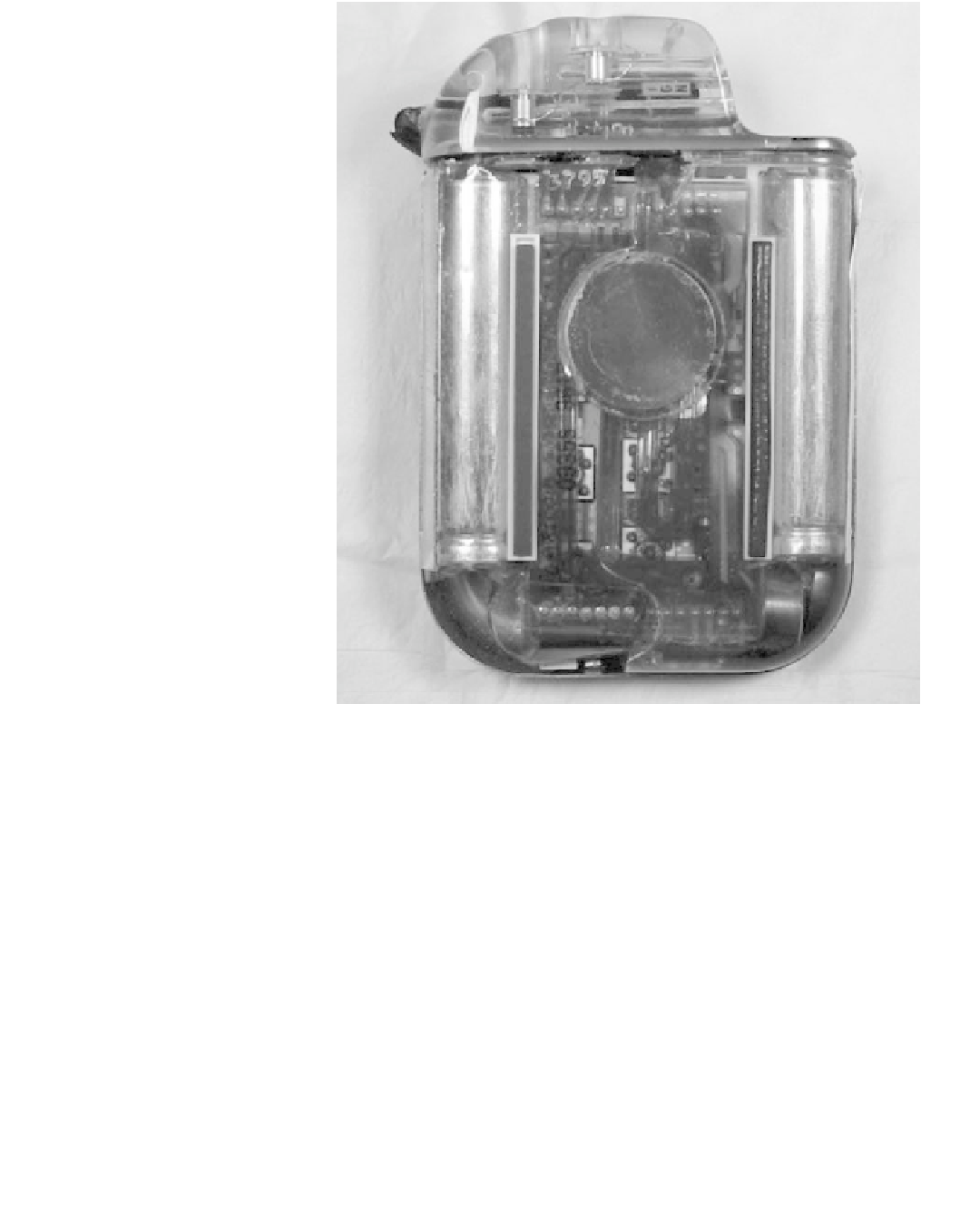Biomedical Engineering Reference
In-Depth Information
Figure 8.33
Modern implantable defibrillators are true marvels of microelectronic packaging. The
level of miniaturization is achieved using advanced circuit integration and packaging technologies,
such as custom ICs, chip-level packaging, and ceramic substrates.
de
brillation. Voltage across the capacitor bank as well as the capacitor charge and dis-
charge currents can be monitored using an oscilloscope or other data acquisition system by
way of isolation ampli
fi
ers. The module is controlled by an onboard microcontroller. It
receives parameter information and commands through an isolated RS232 line.
De
fi
fi
brillation commands are entered via a control computer.
In addition to running the charge and de
brillate sequences, the microcontroller also
performs housekeeping functions (e.g., verify clocks, verify stored energy, perform capac-
itor reform). To ensure that the required energy has been stored in the capacitor bank prior
to de
fi
brillation, the microcontroller reads the voltage across the capacitor bank (using a
suitable voltage divider) through an analog-to-digital converter. To enable emergency man-
ual charging and de
fi
brillation (i.e., not through commands from the computer), isolated
pushbutton switches are available on the instrument. Whenever activated in the manual
mode, the de
fi
brillation module charges to the full energy selection, displays the charge
status, and awaits for the manual command to de
fi
fi
brillate. De
fi
brillation in the manual
mode is done at preset waveform parameters.


Search WWH ::

Custom Search